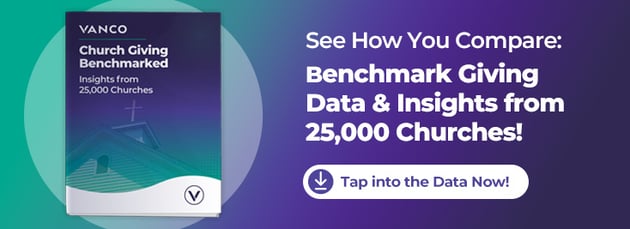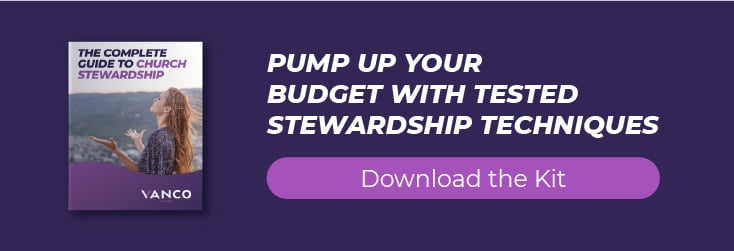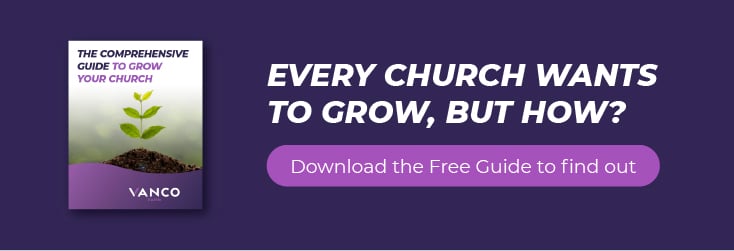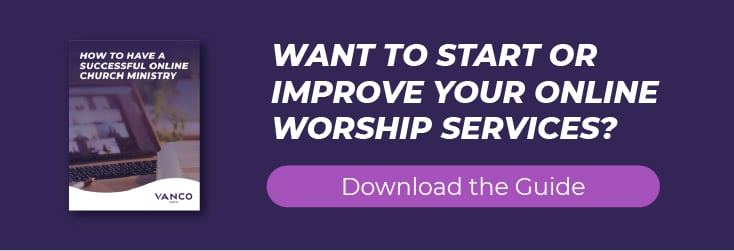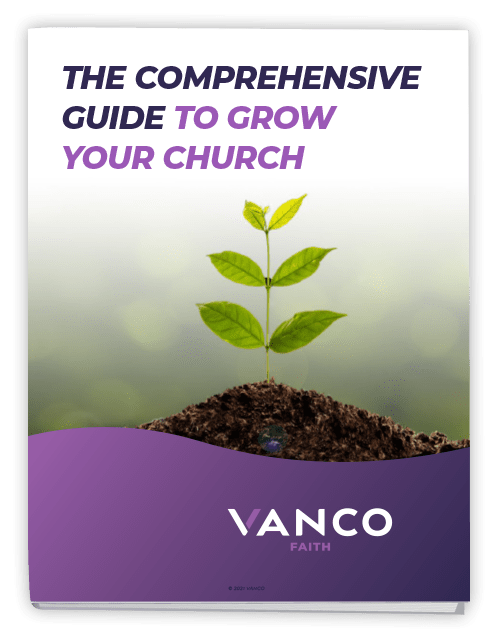
Embarking on the journey to establish a ministry is a profound and purpose-driven endeavor. In today’s digital age, cultivating a strong online giving foundation is essential for the sustainability and growth of any ministry.
Table of Contents
- Importance of Online Giving for Ministries
- Defining a Ministry's Mission and Goals
- Setting Up Your Ministry's Digital Presence
- Step-by-Step Instructions on How to Start a Ministry
- Engaging Your Community Through Digital Channels
- FAQs
Importance of Online Giving for Ministries
In the contemporary landscape of ministry, online giving is a pivotal element. The online offering provides a dynamic and accessible means for supporters to contribute to the mission and outreach efforts of a religious organization.
Online giving is impactful for communities with its convenience and its capacity to connect with a broader audience. By embracing digital platforms, committed church leaders and ministries can break down geographical barriers, engage diverse demographics and cultivate a culture of generosity that extends far beyond physical congregations. Online giving transforms the act of donation into a seamless and immediate experience, aligning with the fast-paced nature of modern lifestyles.
Benefits of a Strong Online Giving Foundation
A robust online giving foundation provides many benefits that fortify the financial stability and overall effectiveness of a ministry:
- It establishes a consistent and reliable source of funding, enabling ministries to plan and execute their programs with greater confidence and strategic vision.
- An online giving platform enhances transparency, offering donors real-time insights into the impact of their contributions. This transparency builds trust and encourages sustained support.
- The digital nature of online giving facilitates efficient recordkeeping and simplifies administrative tasks, freeing up valuable time and resources that can be redirected toward the ministry’s core mission and community outreach initiatives.
A strong online giving foundation is not just a financial conduit but a transformative tool that propels ministries toward greater reach and impact.
Vanco Payments makes connecting churches to their desired audiences and building their communities easy. Our software is easy to use for churches and makes it convenient for members to contribute to their communities. In addition to payment solutions, we provide resources to convert visitors to your church to members. Welcome visitors and encourage them to return with our free welcome materials. Download the packet now to receive church connection templates, welcome letter templates and more!
Defining a Ministry's Mission and Goals

When starting a church ministry, is the foundational step that shapes its purpose and endeavors. A ministry’s mission serves as its compass, articulating the core beliefs and values that underpin its existence. It encapsulates the broader purpose of the ministry, answering the fundamental question of why it exists and what it aspires to achieve.
Aligning your ministry’s needs is a crucial process that involves identifying, prioritizing and addressing the various requirements essential to fulfill your mission. This involves a comprehensive assessment of both internal and external factors, considering the spiritual, financial and operational aspects of the ministry. By closely aligning needs with the overarching mission, a ministry can focus its resources and efforts on areas that require immediate attention, fostering a more efficient and purpose-driven approach.
Whether it involves enhancing community outreach, improving technological infrastructure, or investing in personnel development, aligning needs ensures that the ministry is well-equipped to navigate challenges and capitalize on opportunities, ultimately fortifying its ability to make a positive and enduring impact.
The Shift Toward Online Services
The landscape of building ministry has witnessed a transformative shift toward online services, driven by the integration of technology and evolving community needs. This transition goes beyond mere adaptation to the digital realm; it represents a strategic response to reach a wider audience, foster community engagement and provide accessible avenues for worship and connection.
Online services have become a dynamic platform for ministries to transcend geographical constraints, enabling individuals to participate in religious activities from the comfort of their homes. The shift toward online services not only accommodates diverse schedules and circumstances but also allows ministries to leverage multimedia tools for more immersive and impactful spiritual experiences. As virtual platforms continue to evolve, the integration of online services stands as a pivotal and innovative approach, redefining the ways in which ministries connect with their congregations and fulfill their missions.
Digital Platforms in the Modern Church
Digital platforms play a pivotal role in modern church community outreach by serving as dynamic tools that amplify the reach and impact of ministries. These platforms provide a virtual space for congregations to connect, share information and engage in meaningful conversations beyond the physical confines of a church building. Church congregations are adapting to this change as well, as use digital platforms to take part in church-related activities throughout the week.
Social media, websites and online streaming services become catalysts for disseminating the ministry’s message, events and outreach initiatives to a broader audience. The interactive nature of digital platforms facilitates real-time communication, allowing churches to respond promptly to community needs and build a sense of unity among members. Moreover, these platforms open avenues for creative and inclusive outreach strategies, ranging from virtual prayer meetings to online support groups, fostering a more accessible and interconnected church community that transcends physical boundaries.
Setting Up Your Ministry's Digital Presence

Creating a user-friendly website is paramount in establishing a ministry’s digital presence, because it serves as the virtual gateway for individuals seeking connection and information. A well-designed website should prioritize simplicity and intuitive navigation, ensuring that visitors can easily access essential resources, event details and contact information.
Incorporating engaging visuals, clear messaging and responsive design enhances the overall user experience. Integrating an online giving platform, multimedia content and interactive features further enriches the website’s functionality. Emphasizing accessibility and mobile responsiveness ensures that the site accommodates a diverse audience. A user-friendly website becomes a powerful tool for a ministry to effectively communicate its mission, engage its community and provide a welcoming online space for individuals to explore and connect with the ministry’s offerings.
Establishing a Social Media Presence
Establishing a vibrant social media presence is pivotal for ministries aiming to connect with a diverse and digitally engaged audience. Selecting platforms that align with the ministry’s goals and target demographic is essential, followed by creating compelling and shareable content. Consistent posting, community engagement and timely responses contribute to a dynamic online presence.
Leveraging various media formats, such as videos, images and livestreams, enhances visibility and fosters a sense of community. Integrating the ministry’s values into social media messaging helps build authenticity and resonates with followers. By cultivating an active and interactive social media presence, ministries can extend their reach, share inspirational messages and create online communities that mirror the inclusive and supportive nature of their physical congregations.
Tools and Platforms for Online Community Engagement
Tools and platforms for online community engagement are indispensable for ministries seeking to foster meaningful connections in the digital realm. Social media platforms like Facebook, Twitter and Instagram provide accessible spaces for community interaction, allowing ministries to share updates, host discussions and connect with members in real time. Additionally, dedicated community forums and chat platforms, such as Slack or Discord, offer focused environments for deeper conversations and collaboration.
Video conferencing tools like Zoom or Microsoft Teams facilitate virtual events, workshops and prayer sessions, bringing members together regardless of physical distance. Integrating these tools into the ministry’s digital strategy not only enhances communication but also creates a dynamic and inclusive online community experience that mirrors the warmth and camaraderie of in-person gatherings.
Step-by-Step Instructions on How to Start a Ministry
Starting a church ministry is a very important task, but it can be daunting. Getting a ministry off the ground can be complex, with many moving parts. Here are some key action steps necessary for a successful ministry:
- Identify and clarify your mission: Identify what needs in your community you are trying to meet. Define the goals of your ministry and its core values and beliefs.
- Develop your business plan: Outline your ministry's structure, programs, budget and potential sources of funding or support.
- Establish a legal and organizational structure: Register your nonprofit ministry and nonprofit status and develop the rules and structure that will govern your ministry.
- Build your community: Designate core people who will help you manage the beginnings of your ministry and who believe in the ministry’s value. Conduct market research and identify the core audience of your ministry to start spreading the word about your ministry’s existence.
- Develop programs and services: Design activities that align with your mission, fit in your budget and encourage the community to be involved in your ministry.
- Launch, evaluate and grow: Once your ministry is off the ground, evaluate its effectiveness, focus on its growth and lean in to what is most effective in building your community.
- Maintain compliance and reporting: Legitimate nonprofit entities must comply with legal requirements and take proper administrative steps to maintain transparency in financial records.
If you are wondering if you are on the right track in starting your ministry, you can learn more about ministry best practices here. You can also use Vanco’s free ministry evaluation form.
Engaging Your Community Through Digital Channels

Embarking on the journey to start a ministry involves a thoughtful and intentional process, and engaging the community through digital channels is a crucial first step. Do this by:
- Identifying the target audience
- Selecting the most suitable digital platforms for outreach, such as social media, a dedicated website or email newsletters
- Creating a compelling online presence by sharing inspiring content, engaging in conversations and actively participating in relevant online communities and encouraging members to contribute and share their stories to foster a sense of connection
- Using multimedia tools to convey the ministry’s vision and values effectively
By strategically leveraging digital channels, ministries can establish a strong foundation for community engagement, laying the groundwork for a vibrant and inclusive online presence.
Hosting Virtual Events and Services
Hosting virtual events and services is vital when starting a ministry, especially in today’s digital age. Choose user-friendly platforms for seamless experiences, promote events across digital channels and ensure interactive elements to enhance engagement. From online prayer sessions to virtual worship gatherings, these events provide a vital space for community building, allowing members to connect, share and participate in the ministry’s activities from the comfort of their homes.
Use Social Media for Daily Engagement and Outreach
It’s important for ministry leadership and leadership teams to harness the power of social media for daily engagement and outreach. Here are several important components of maintaining social media:
- Cultivate a consistent online presence by posting inspirational content, updates and relevant information to keep your community informed and engaged.
- Encourage active participation through interactive elements like polls, discussions and live sessions to foster a sense of belonging.
- Leverage various platforms strategically, tailoring your content to resonate with the unique dynamics of each one.
- Actively respond to comments, messages and shares to cultivate a responsive and inclusive digital community.
By embracing social media as a daily tool for engagement, ministries can extend their reach, share their missions and build enduring connections with diverse audiences.
Strategies for Maintaining a Vibrant Online Community
Sustaining a vibrant online community involves strategic planning and consistent effort. First, foster a sense of belonging by encouraging open communication and active participation among members. Then, regularly share compelling content that aligns with the ministry’s values to spark discussions and interactions. Here are a few ways to keep your online presence fresh and vital:
- Create a content calendar to maintain a consistent posting schedule and keep members informed about upcoming events, initiatives or inspirational messages.
- Use various media formats, such as videos, images and livestreams, to diversify engagement.
- Implement online forums or chat groups to further facilitate ongoing conversations and community support.
- Prioritize responsiveness by promptly addressing inquiries, comments and messages.
By combining these strategies, ministries can cultivate a dynamic and connected online community that mirrors the warmth and fellowship of in-person gatherings.
FAQs
What are the first steps to starting a ministry?
The first steps to starting a ministry involve clarifying the mission goals, establishing a strong online presence through digital channels and actively engaging in the community through various outreach strategies.
How does one create an effective online presence when starting a ministry?
To create an effective online presence when starting a ministry, begin by developing a user-friendly website, leveraging social media platforms for daily engagement, hosting virtual events and services and implementing strategies for maintaining a vibrant and inclusive online community.
What are effective strategies for online church engagement?
Effective strategies for online church engagement include using social media for daily interactions, hosting engaging virtual events and services, maintaining a consistent and diverse content calendar, promptly responding to community interactions and fostering open communication to create a dynamic and connected church community.
What tools are essential for managing a virtual ministry?
Essential tools for managing a virtual online ministry include reliable video conferencing platforms for virtual meetings and services, a user-friendly website for a strong online presence, social media management tools for community engagement, virtual event platforms for hosting interactive gatherings and communication tools such as email newsletters or messaging apps to keep the community informed.
What are the benefits of online versus in-person ministry?
Online ministry offers a broader reach and accessibility, the ability to connect with a diverse global audience, flexibility in scheduling and participation and the potential for innovative and multimedia-rich engagement. In contrast, more traditional churches and in-person ministries offer more immediate and intimate connections, fostering a tangible sense of community, personal interactions and shared physical experiences. The choice between online and in-person ministry often depends on balancing the advantages of wider outreach and accessibility in the digital space with the unique depth of connection and communal aspects found in face-to-face interactions.
How can technology enhance spiritual outreach?
Technology can enhance spiritual outreach by providing accessible platforms for virtual worship, fostering community connections and delivering inspirational content to a global audience.
Discover Everything You Need to Know About Church Growth
Download our free eBook to learn everything you need to know about church growth. By following the guidelines and tested strategies outlined in our eBook, you’ll have the framework needed to give your church a necessary jolt.


